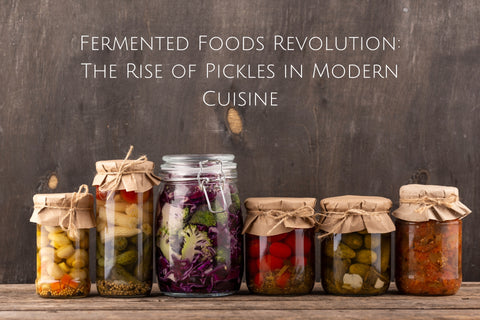Introduction:
Welcome to Karivepaku Cuisine Chronicles, your go-to destination for exploring the vibrant flavors and rich culinary heritage of South India and beyond. Our blog is dedicated to sharing authentic recipes, cooking tips, and stories that celebrate the diverse and delicious world of South Indian cuisine.
Exploring South Indian Flavors:

In the heart of South Indian cuisine lies a humble yet ubiquitous ingredient – karivepaku, also known as curry leaves. Karivepaku is more than just a garnish; it's a fragrant essence that infuses South Indian dishes with a depth of flavor and aroma. Let's delve into the world of karivepaku and explore how it shapes the culinary landscape of South India.
The Fragrant Fingerprint of Karivepaku:

- Aromatic Essence: Curry leaves boast a unique, citrusy aroma with a slightly bitter undertone. This distinct fragrance adds a freshness and complexity to South Indian curries, dals, and stir-fries.
- The Art of Tadka: Tadka, the process of tempering oil with spices, often features karivepaku. As the leaves crackle in hot oil, they release their essential oils, infusing the entire dish with an irresistible aroma. Imagine the sizzle and pop of mustard seeds followed by the burst of karivepaku fragrance – a true symphony for the senses!
Karivepaku's Culinary Journey Across South India:

- Tamil Nadu's Comforting Embrace: In Tamil Nadu, karivepaku is a star ingredient in sambar, a lentil stew that forms the backbone of many meals. It's also essential in fragrant vegetarian stews like Chettinad Varuval and comforting lentil soups like Rasam.
- Andhra Pradesh's Fiery Delights: Even in Andhra's fiery curries, known for their bold spice combinations, karivepaku adds a touch of balance and complexity.
A Beyond-the-Plate Significance:
- Ayurvedic Legacy: Karivepaku holds a place in Ayurvedic medicine, believed to possess various health benefits like promoting hair growth and aiding digestion.
- Cultural Significance: The use of karivepaku transcends flavor. In some South Indian traditions, it's used in religious ceremonies for its symbolic significance.
Cooking with Karivepaku:
Here are some tips to maximize the magic of karivepaku in your cooking:
- Fresh is Best: Use fresh karivepaku leaves whenever possible for the most vibrant flavor and aroma.
- Timing is Key: Add karivepaku towards the end of cooking to preserve its delicate fragrance.
Exploring Karivepaku Cuisine:
If you're looking to delve deeper into the world of South Indian flavors with karivepaku at the forefront, consider exploring these regional specialties:
- Meen Curry (Kerala): A fragrant fish curry where the delicate flavor of fish is beautifully complemented by coconut milk and the subtle bitterness of karivepaku.
- Sambar (Tamil Nadu): A lentil stew that forms the heart of many Tamil meals. The addition of karivepaku adds a depth of aroma and balances the tangy flavors of tamarind and tomatoes.
Beyond South India:

Karivepaku, also known as curry leaves, may be synonymous with South Indian cuisine, but its fragrant influence extends far beyond this region. Let's embark on a journey to explore the surprising presence of karivepaku in other parts of the world and discover its diverse culinary applications.
Aromatic Echoes in Southeast Asia:
- Thailand: Curry leaves, known as "bai kaffir," are a key ingredient in Thai curries, especially green curry. They add a subtle citrusy note that complements the aromatics like lemongrass and galangal. They are also used in fragrant Thai soups like tom yum.
- Indonesia: In Indonesia, karivepaku, called "daun salam," is used in spice pastes like bumbu bali, a base for many Indonesian curries. It adds a depth of flavor to stews and soups, particularly those featuring coconut milk.
The Global Reach of the Curry Leaf:
The diaspora of Indian communities has also played a role in spreading the love for karivepaku. Today, you can find curry leaves in Indian restaurants and grocery stores worldwide, adding a touch of home for those seeking the taste of South Asia.
Beyond the Culinary Sphere:
The uses of karivepaku extend beyond the kitchen. In some parts of Southeast Asia, curry leaves are used for medicinal purposes, with beliefs about their potential benefits for digestion and hair health.
Cooking Tips and Techniques:

Freshness is Key:
- Aromatic Impact: Fresh karivepaku leaves boast the most vibrant aroma and flavor. Look for leaves that are green, firm, and have a slight sheen. Avoid wilted or discolored leaves.
- Storage Secrets: Store fresh karivepaku leaves in a cool, dry place away from direct sunlight. For longer storage, place them in an airtight container in the refrigerator for up to a week.
Unlocking the Fragrance:
- The Art of Tadka: Tadka, the process of tempering oil with spices, is where karivepaku truly shines. Add karivepaku leaves to hot oil at the beginning of the tadka process. As they sizzle and crackle, they release their essential oils, infusing the entire dish with an irresistible aroma.
- Timing it Right: Don't overcook karivepaku leaves. Add them towards the end of cooking to preserve their delicate fragrance and prevent them from turning bitter.
Beyond the Leaves:
- Don't Discard the Stems: Lightly crush the stems of the karivepaku leaves before adding them to the tadka. This releases additional flavor and adds a textural contrast.
- Curry Leaf Powder: While fresh is best, dried curry leaf powder can be a handy substitute. Use it sparingly and consider toasting the powder before using to enhance the fragrance.
Seasonal Specialties:

Spring's Delicate Delights:
- Spring Greenery: Spring brings a fresh bounty of vegetables like baby spinach, green beans, and fresh fenugreek leaves. These delicate vegetables pair beautifully with the subtle bitterness and citrusy aroma of young karivepaku leaves. Look for recipes featuring stir-fries or light curries that highlight the spring harvest.
Summer's Mango Mania:
- Aromatic Accompaniment: Summer is mango season in South India, and karivepaku plays a surprising role. While not directly used in mango dishes themselves, fragrant curry leaves are often added to chutneys and pickles that accompany these sweet and tangy treats.
Monsoon Magic:
- Comforting Curries: The monsoon season brings much-needed rain and a shift towards more robust dishes. Hearty lentil stews and vegetable curries take center stage. Karivepaku's role intensifies in these dishes, its aroma and flavor adding depth and complexity to these comforting monsoon meals.
Autumn's Festival Feasts:
- Festive Fragrances: Autumn coincides with several major festivals in South India, like Onam and Diwali. During these festive times, elaborate meals are prepared. Karivepaku leaves are indispensable, adding their fragrant touch to everything from lentil fritters (vadas) to aromatic sambar and fragrant rice dishes like pulihora.
Beyond the Plate:
- Seasonal Significance: In some parts of South India, there's a belief that karivepaku leaves grown during certain seasons possess stronger medicinal properties. For example, spring leaves might be used for their hair growth benefits, while monsoon leaves might be favored for digestive purposes.
Karivepaku: More Than Just a Leaf

Karivepaku's presence in South Indian communities extends far beyond its culinary uses. It's a symbol of tradition, a thread in the cultural tapestry, and a reminder of the deep connection between people, place, and the food they share. So next time you encounter a dish featuring karivepaku, remember the rich cultural significance it carries within each fragrant leaf.
Conclusion:
Thank you for joining us on this culinary journey through the flavors and traditions of Karivepaku Cuisine. Whether you're a seasoned chef or a curious food enthusiast, we invite you to explore, experiment, and savor the delicious delights that await you in our blog. Happy cooking!




Comments (0)
There are no comments for this article. Be the first one to leave a message!